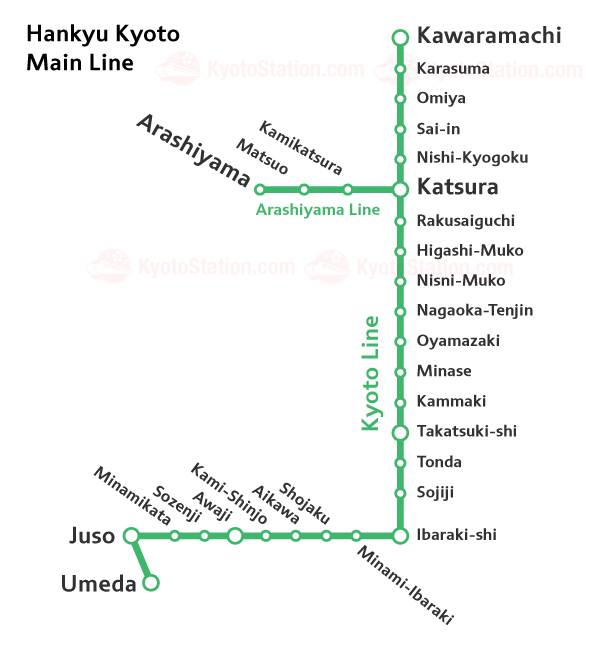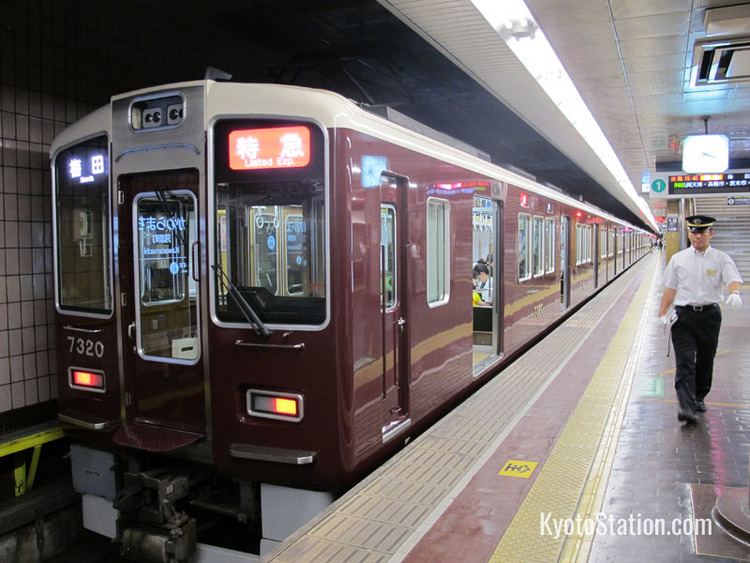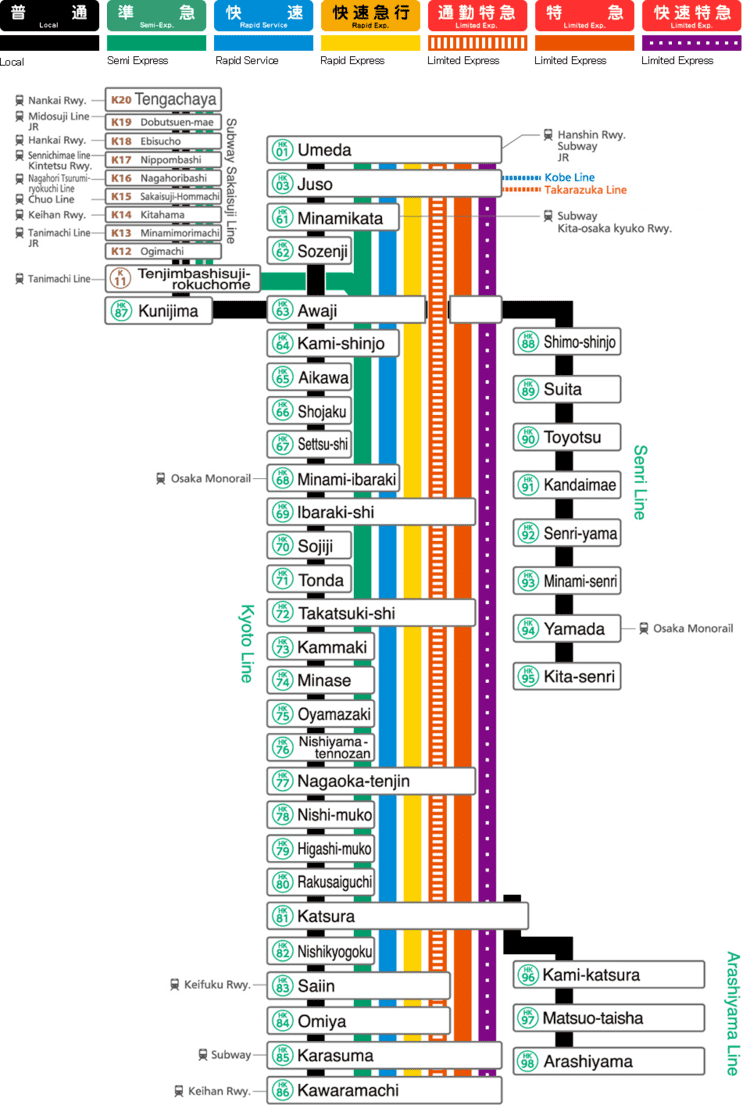Native name 阪急京都本線 Operator(s) Hankyu Railway Line length 45.3 km (28.1 mi) Locale Kansai region | Stations 26 Depot(s) ShōjakuKatsura Number of tracks Double | |
 | ||
Terminis Jūsō Station, Kawaramachi Station | ||
Automatically flipping seats hankyu kyoto main line
The Hankyu Kyoto Main Line (阪急京都本線, Hankyū Kyōto Honsen) is a railway line in Japan operated by the private railway operator Hankyu Railway. It connects Umeda Station, Osaka and Kawaramachi Station, Kyoto.
Contents
- Automatically flipping seats hankyu kyoto main line
- Hankyu kyoto main line 5300 serise umeda station
- Definition
- History
- Proposed connecting line
- Service types
- Through services
- Stations
- Rolling stock
- References

Hankyu kyoto main line 5300 serise umeda station
Definition

The Kyoto Main Line is often called the Kyoto Line (京都線, Kyōto-sen) for short, and in a broader sense its two branch lines, the Senri Line and the Arashiyama Line, are included to the Kyoto Line by historical, geographical and structural reasons. The other two sections of Hankyu, the Kobe Line and the Takarazuka Line are called the Shinpōsen (神宝線) as a whole.

Officially, the Kyoto Main Line is from Jūsō to Kawaramachi, however, all trains run beyond Jūsō to Umeda terminal, using the eastern tracks of the section exclusively. Hankyu treats the Kyoto Main Line in the same way as the passengers do, i.e. as the line between Umeda and Kawaramachi (except for special circumstances such as governmental procedures).
History
The Umeda - Juso section was opened in 1910 as part of the Hankyu Takarazuka Line.

The Northern Osaka Electric Railway Co. opened the Juso - Awaji section as 1435mm gauge dual track electrified at 600 VDC in 1921, and the company merged with Hankyu in 1923.
The Awaji - Saiin section was opened in 1928, the year the voltage was increased to 1500 VDC.
The Saiin - Omiya section opened in 1931, and the line was extended to Kawaramachi in 1963.
Proposed connecting line

A loop line from Juso to Awaji via Shin-Osaka station, to provide a direct connection to the Shinkansen has been proposed, but is not currently scheduled for construction.
Service types
In the timetable revised on December 21, 2013, regular trains are classified in nine types:
The following limited express trains are named follows;
Through services
In addition to intra-line services, the line operates through services to/from other lines as follows:
Stations
In the table below, service types that stop at the station are shown by the abbreviations (see the section above). Blank means that the service type passes the station. In addition to the types shown here, local trains stop at all stations (not including Higashi-Suita Signal Stop, where only a garage of Osaka Subway cars exists).
No trains stop at Nakatsu which is served by Local trains on the Kobe Line and the Takarazuka Line, because of the absence of platform, thus, in operation, there is no Nakatsu Station on the Kyoto Line. There are also through trains to the Senri Line from Awaji Station and the Osaka Municipal Subway Sakaisuji Line. Sakaisuji Semi-Express trains are routed from Tengachaya Station to Kawaramachi Station and operated on weekday rush hours and Saturdays and holidays.
The starting point of the distances (km) shown is Jūsō Station, which is officially the starting point of the Kyoto Main Line.
Rolling stock
History
The Kyoto Main Line was constructed in the following phases:
Prior to the merger of Hankyu Railway (then Hanshin Kyūkō Railway) and Keihan Electric Railway in 1943, the line and its branches were owned by the latter and called the Shin-Keihan (New Keihan) Line. In the breakup of the merger in 1949, the line was not ceded to Keihan and became a competitor of the Keihan Main Line.
